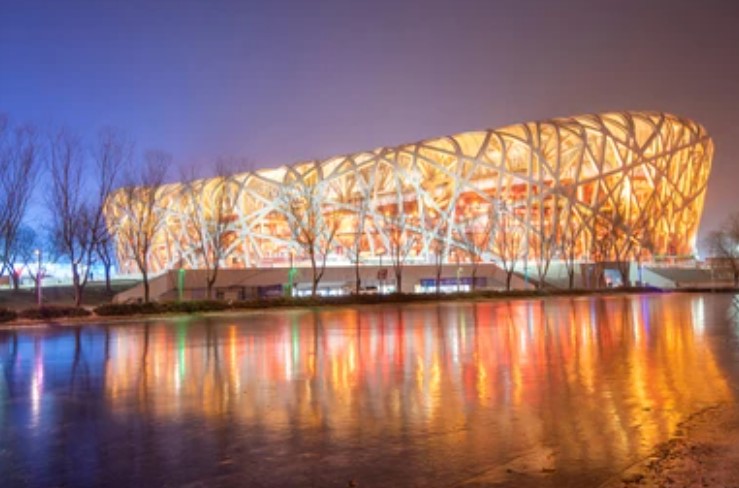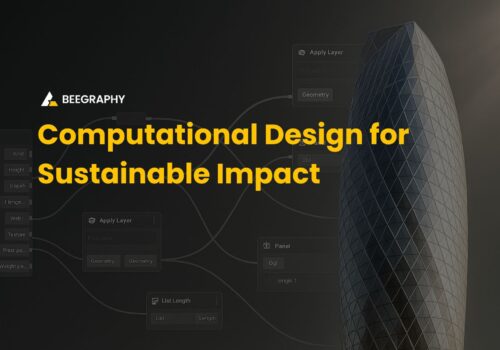Table of Contents
Computational design is a digital blend of design and data. It involves the science of logical thinking and the art of designing. These computational tools allow us to create, analyze, and test multiple solutions in real time.
There is a lot of speculation about how computational design and technology will disrupt industries as it advances over time. Designing has come a long way, from drawing manual sketches to experiencing futuristic concepts. But will this digitalization disrupt the purpose of human labour? Can it overtake human efforts?
With several misconceptions and queries centered on this topic, let’s address those here.
Computational Design FAQ: Answers to 18 Commonly Asked Questions
What is computational design?
Computational design is an advanced approach that utilizes digital tools and software to create, evaluate, and automate various tasks. It uses computer programming and analysis to explore multiple design solutions and optimize the performance of the final design. Professionals and industrial experts rapidly adapt these approaches to enhance productivity and design outcomes.
How is computational design different from traditional design?
Traditional design methods rely on manual input and manipulation of geometry, which limits the ability to explore alternative design options.
Computational design, on the other hand, utilizes automation and scripting to generate, simulate, and optimize designs, making it a more versatile and exploratory approach. This allows for the exploration of a vast range of design options, analysis of different parameters, and optimization of the design to meet specific requirements, resulting in innovative and efficient designs.
What are the major benefits of computational design?
There are several benefits of applying computational design; here are a few:
- Practical design solutions
- Streamlined operations
- Increased productivity
- Risk Mitigation and
- Cost Control
Who uses computational design?

Who uses computational design? Image by Shutterstock.
Professionals in various fields use computational software to solve complex design problems and enhance productivity. Some common users of computational design include:
- Architects
- Engineers
- Interior designers
- Product designers
- Manufacturers
- Animators
- Game developers and many more.
What industries are computational design commonly used in?
Computational design is most beneficial in the AEC and manufacturing industries. However, due to its customization, precision, and efficiency, it has also become a preferred choice in other sectors, including:
- Fashion
- Jewelry
- Furniture
- Automobile
- Art
- Automation and
- Robotics
How to learn computational design?
You can start by reading books on computational design and watching tutorials on platforms like YouTube to gain theoretical knowledge. Enrolling in online courses or pursuing a master’s degree in computational design can help you acquire more advanced skills.
To excel in computational design, practical experience is crucial. Working with various software tools and experimenting with different approaches can help you develop your skills and deepen your understanding of the subject.
Since computational design is primarily based on visual programming, knowledge of computer programming is not a must. Nevertheless having some coding skills can give you an edge and enable you to perform tasks that might be otherwise impossible or too complex.
What kind of knowledge or skills is required to excel in computational design?
Computational designers require a firm foundation in technical and analytical skills to excel in their careers. You might need skills like,
- Programming and visual scripting
- Data analysis and management
- BIM 3D modeling and visualization
- Designing
- Problem-solving
- Multidisciplinary collaboration
Apart from familiarizing yourself with the design tools, you may also need a comprehensive understanding of computational and logical thinking to match the complexity of the software.
What is the difference between parametric design, algorithmic design, computational design, and generative design? Are they the same thing?
Computational design is a developing concept that uses computer processing to deliver efficient outcomes. It has three subsets based on their purposes and results: parametric, algorithmic, and generative design.
- The parametric design relies on parameters to create and manipulate a design geometry.
- The algorithmic design relies on algorithms to generate complex geometry.
- The generative design relies on algorithms and computer-aided simulations to generate multiple design solutions.
What are some computational design software?

BeeGraphy – computational design software with collaboration features
Computational design software includes standalone programs like Houdini and BeeGraphy and 3D modeling plugins like Grasshopper for Rhino, Dynamo for Revit, Geometry Nodes for Blender, Param-O for Archicad, etc.
Can computational design be done online?
Yes. Despite the potential for online compatibility, most computational design tools currently only support offline workflow. However, cloud-based computational design software like BeeGraphy aims to close that gap.
Can computational design be used beyond generating complex forms?
Yes. Computation design is a dynamic methodology. Along with generating complex forms, it also facilitates budget calculations, structural optimizations, visualizations, and data analysis.
How does computational design impact fabrication/manufacturing?
Advancements in computational design and programming increased the manufacturing and fabrication industries’ precision, adaptability, and automation. Businesses can perform real-time analysis and build complex 3D models with precise and customized materials. This enhances the efficiency of the production chain, reduces material wastage, and improves the overall productivity of the operations.

Computational design is widely used in prototyping and 3D printing. Image: Shutterstock.
Computational design software like BeeGraphy can streamline fabrication and manufacturing processes. It enables designers to have remote access to cutting-edge tools to create complex geometries and customized designs.
How does Computational Design impact the budget? Are computationally designed products expensive?
Computational design can have an enormous impact on the budget. While computationally designed products may seem costly initially, they cut these expenses in the long term by saving on resources like time, material, labor, and maintenance.
Furthermore, the cost of computational design tools and software has come down in recent years, making them more affordable to architects and designers on a tight budget. As technology advances and becomes more widely available, we may expect to witness even more cost-effective, and environmentally friendly designs emerge from the discipline of computational design.
How does computational design impact the role of designers?
The impact of computational designing is evolving, and so is the role of a computational designer. Rapid analysis and feedback enable risk-free project management and improved efficiency. Visual scripting allows designers to program without having to learn codes. It enhances productivity by encoding algorithms that make robust real-time modifications to 3D models.
What are some challenges of implementing a computational design in a workflow?
With its steep learning curve and complex algorithm, implementing the computational design in a workflow can be challenging. The unfamiliarity with parametric and computational tools can intimidate architects and designers.
How does computational design impact sustainability and environmental factors?
Computational design improves sustainability in multiple ways:
- It can optimize the use of materials, energy, and resources, reducing waste and minimizing the environmental impact of the design.
- By analyzing and optimizing the design for specific environmental conditions, such as wind, sun, and temperature, computational design can help create buildings and products that are more sustainable and efficient in their use of resources.
- It optimizes the orientation and shape of the building to gain maximum natural light and ventilation.
- It helps create designs that are more energy-efficient, reducing the carbon footprint of buildings and products.
- It helps create eco-friendly building materials.
What are some notable examples of projects that have been developed using computational design?
Some notable projects completed using computational methodologies include
- The Beijing National Stadium (Bird’s Nest) in China by Swiss architects Herzog & de Meuron. They used computational software to model the complex steel structure, enabling the architects to optimize the design for efficiency and structural integrity.

Beijing Olympic Stadium. Image: Shutterstock
- The Bee’ah Headquarters in UAE, by Zaha Hadid Architects. They used computational design techniques to optimize its complex geometry and sustainability features. The building’s intricate form was carefully crafted to optimize environmental performance, with features such as natural ventilation, shading, and energy-efficient systems.
- The Museum of the Future in UAE by architect Shaun Killa. They used advanced parametric modeling and simulation software to craft its complex geometry and the unique facade of the building. The design perfectly complements the museum’s focus on the futuristic exploration of emerging technologies.

The Museum of the Future in UAE by architect Shaun Killa. Image: Shutterstock.
How does artificial intelligence (AI) fit into computational design?
AI enables the computational software to perform analytical tasks like stimulating and monitoring design scenarios. It also provides tools for design augmentation and research. AI enables decision-making by interpreting the data and training the algorithms to solve problems with minimal or zero human intervention.
Envisioning the Future with Computational Design
Computational design is a phenomenal breakthrough that overcomes traditional limitations to improve workflow efficiency and productivity. As software development advances, there is a lot of conjecture regarding how it may disrupt manual labour. However, it’s about combining the two to deliver better results in less time with a precise approach.
Computational design has a bright future and will continue to excel in design development– as a facilitator and not a disruptor!


















